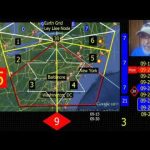What Shape Is The Universe?
It’s a reasonable question to wonder what the shape of the Universe is. Is it a sphere? A torus? Is it open or closed, or flat? And what does that all mean anyway?
Support us at:
More stories at:
Follow us on Twitter: @universetoday
Follow us on Tumblr:
Like us on Facebook:
Google+ –
Instagram –
Team: Fraser Cain – @fcain
Jason Harmer – @jasoncharmer
Susie Murph – @susiemmurph
Brian Koberlein – @briankoberlein
Chad Weber – [email protected]
Kevin Gill – @kevinmgill
Created by: Fraser Cain and Jason Harmer
Edited by: Chad Weber
Music: Left Spine Down – “X-Ray”
The Universe. It’s the only home we’ve ever known. Thanks to its intrinsic physical laws, the known constants of nature, and the heavy-metal-spewing fireballs known as supernovae we are little tiny beings held fast to a spinning ball of rock in a distant corner of space and time.
Doesn’t it seem a little rude not to know much about the Universe itself? For instance, if we could look at it from outside, what would we see? A vast blackness? A sea of bubbles? Snow globe? Rat maze? A marble in the hands of a larger-dimensional aliens or some other prog rock album cover?
As it turns out, the answer is both simpler and weirder than all those options. What does the Universe look like is a question we love to guess at as a species and make up all kinds of nonsense.
Hindu texts describe the Universe as a cosmic egg, the Jains believed it was human-shaped. The Greek Stoics saw the Universe as a single island floating in an otherwise infinite void, while Aristotle believed it was made up of a finite series of concentric spheres, or perhaps it’s simply “turtles all the way down”.
Thanks to the mathematical genius of Einstein, cosmologists can actually test out the validity of various models that describe the Universe’s shape, turtles, mazes, and otherwise.
There are three main flavors that scientists consider: positively-curved, negatively-curved, and flat. We know it exists in at least four dimensions, so any of the shapes we are about to describe are bordering on Lovecraftian madness geometry, so fire up your madness abacus. Ya! Ya! Cthulhu ftagen.
A positively-curved Universe would look somewhat like a four-dimensional sphere. This type of Universe would be finite in space, but with no discernible edge. In fact, two distant particles travelling in two straight lines would actually intersect before ending up back where they started.
You can try this at home. Grab a balloon and draw a straight line with a sharpie. Your line eventually meets its starting point. A second line starting on the opposite side of the balloon will do the same thing, and it will cross your first line before meeting itself again.
This type of Universe, conveniently easy to imagine in three dimensions – would only arise if the cosmos contained a certain, large amount of energy.
To be positively-curved, or closed, the Universe would first have to stop expanding – something that would only happen if the cosmos housed enough energy to give gravity the leading edge. Present cosmological observations suggest that the Universe should expand forever. So, for now, we’re tossing out the easy to imagine scenario.
A negatively-curved Universe would look like a four-dimensional saddle. Open, without boundaries in space or time. It would contain too little energy to ever stop expanding.
Here two particles traveling on straight paths would never meet. In fact, they would continuously diverge, getting farther and farther away from each other as infinite time spiraled on.
If the Universe is found to contain a goldilocks specific, critical amount of energy, teetering perilously between the extremes, its expansion will halt after an infinite amount of time,
This type of Universe is called a flat Universe. Particles in a flat cosmos continue on their merry way in parallel straight paths, never to meet, but never to diverge either.
Sphere, saddle, flat plane. Those are pretty easily to picture. There are other options too – like a soccer ball, a doughnut, or a trumpet.
A soccer ball would look much like a spherical Universe, but one with a very particular signature – a sort of hall of mirrors imprinted on the cosmic microwave background.
The doughnut is technically a flat Universe, but one that is connected in multiple places. Some scientists believe that large warm and cool spots in the CMB could actually be evidence for this kind of tasty topology.
Leave A Reply
You must be logged in to post a comment.









 Paranormal
Paranormal

